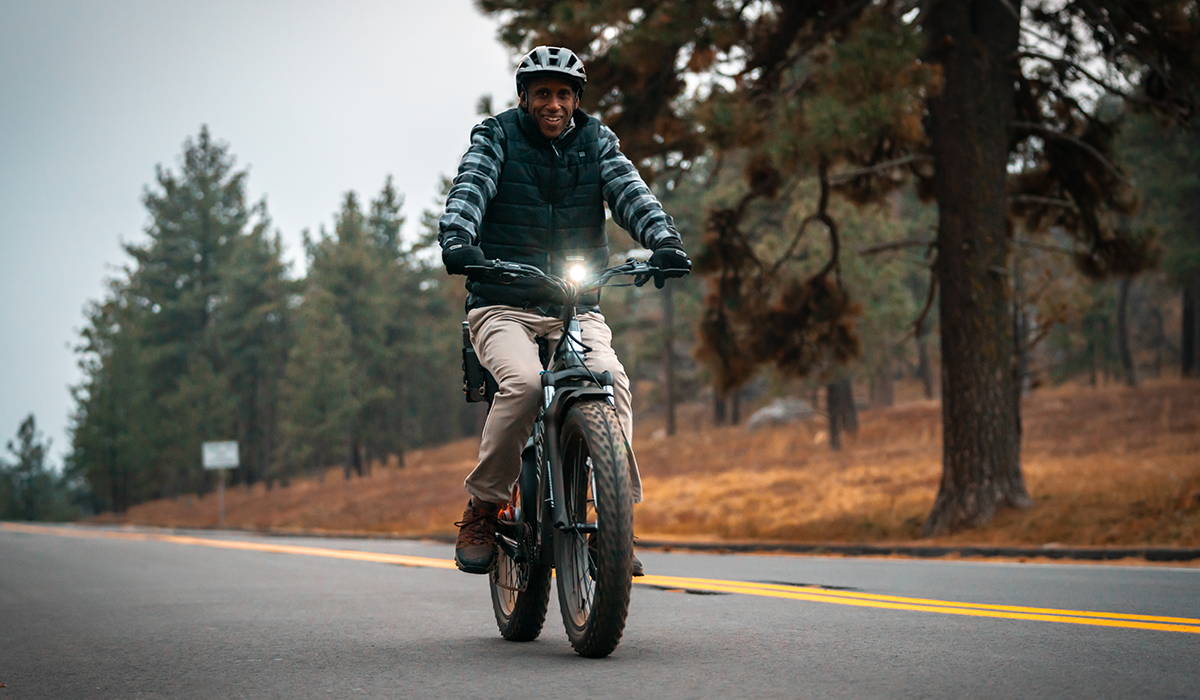
Everything You Need To Know About Bicycle Lumen Lights
February 7, 2023
Bicycle lumen lights play a critical role when it comes to ensuring your safety on the road. Day or night, a light for bicycle rides can help you see and be seen. When it comes to bike lights, there may be many questions that arise, such as, what is the ideal brightness? How many lumens is ideal for my bike light? And more importantly, what exactly is a lumen? In this guide we will go over all aspects of bike light lumens to help illuminate your understanding, and enlighten you on best practices so that you can continue to ride with peace of mind.
What do light lumens, bike lights, and road conditions have in common? Let’s find out!
What Is A Lumen?
Simply put, a lumen is a measurement on the total amount of visible light produced from your front or rear lights. The higher the lumen rating, the brighter the lamp will appear.
Comparing The Brightness of Lumens
Some of you may be thinking to yourself, “How many lumens for bike lights will I need?” Well let’s look at this bike lumens chart below to better understand lumen range and what is best applicable to your use case:
|
0 - 100 Lumens |
This is the lowest level of brightness for a rear light that can provide extra visibility when coupled with a front light. |
|
100 - 200 Lumens |
This is the lowest level of brightness for a front light only when riding during the day to add more visibility for other cyclists and/or motorists. |
|
200 - 300 Lumens |
This is the minimum level of brightness for a front bike light. It’s best used in well-lit areas or as a backup light. |
|
300 - 500 Lumens |
This is a good level of brightness for commuting in urban areas or for use on well-lit trails. |
|
500 - 800 Lumens |
This is a bright level of light suitable for mountain biking or off-road use. |
|
800 - 1200 Lumens |
This is a very bright level of light suitable for fast-paced mountain biking or for use in very dark conditions. |
|
1200+ lumens |
This is an extremely bright level of light that is suitable for high-speed cycling or for use in very dark, off-road conditions. |
It's worth noting that a higher number of lumens doesn’t always translate to a brighter light in real-world use. The design and quality of the light, as well as the type of beam pattern it produces, can also impact its perceived brightness.
Front and Rear Lights
Front and rear lights are both important for the safety of cyclists. Front lights help the rider see the road ahead and make themselves more visible to other road users, while rear lights help make the rider more visible from behind.
Front lights are typically mounted on the handlebars and are used to illuminate the road in front of the rider. It’s important to have a bright front light when riding in low light conditions, such as at night or in fog, to help the rider see potential hazards on the road. The Aventon front headlight is the perfect headlight for everyday (and night) riding with a lumen range of 100 to 500 lumens, and a battery life that can last up to 21 hours depending on the lumen setting. It’s also USB rechargeable, meaning you can charge it right on your Aventon ebike!
Rear lights are typically mounted on the bike frame or seatpost, and are used to make the rider more visible to other cyclists or motorists from behind. It’s important to have a bright rear light when riding in low light conditions or when riding on busy roads, to help keep you riding safely. The Aventon tail light ranges from 5 to 40 lumens and has a run time of up to 85 hours because of its power-saving mode. The power-saving mode will put the light to sleep if it does not detect motion for more than 120 seconds, giving it a longer riding life to protect you on the road.
In general, it’s a good idea to always ensure you have a front and rear light that are fully charged before going on a bike ride. This is a great habit to get into, one that promotes safe riding that will continue to protect you and other riders and motorists.
Ideal Brightness For Bike Lights
When it comes to bike lights, the ideal brightness will depend on the specific conditions you'll be using it in. If you'll be riding on well-lit roads, a light with a lower brightness will do the job. However, if you'll be riding on dark trails or in areas with limited street lighting, a brighter light may be required.
In general, it's a good idea to choose a light that has a brightness of at least 250 lumens. This will provide enough illumination to see and be seen in most situations. Some lights are even brighter, with outputs of up to 2000 lumens or more. These can be useful for very dark conditions or for off-road riding, but they may not be necessary for most urban or suburban cycling.
It's also a good idea to choose a light that has a beam pattern that is well-suited to your needs. Some lights have a wide beam pattern that is good for illuminating a large area, while others have a more focused beam that is better for seeing farther ahead. Consider what you'll be using the light for and choose a beam pattern that is appropriate.
Lights Too Bright For The Road
Can bike lights be too bright for the road? The answer is “yes”. In some situations bike lights can be too bright. If a light is too bright, it can be hard to see in lower light conditions, and it can also be blinding to other cyclists and motorists. Be mindful of how you use your light and to avoid shining it directly into the eyes of other road users. A high intensity bike light can temporarily impair other cyclists’ or motoris’ vision. If you're using a light with a focused beam pattern, try to aim it slightly downward so that it illuminates the road in front of you without shining directly into the eyes of others. This will help ensure that you can see and be seen without causing discomfort or distraction for others. To avoid this, choose a light with a brightness that is appropriate for the conditions you'll be riding in.
If you’re riding on well-lit roads, a light with a lower brightness may be more appropriate. However, if you’re riding on dark roads without very many street lights, a brighter light may be necessary.
Let Your Light Shine
Remember, bike lights aren’t just for night riding. Though they’re not legally required for riding during the day, they can help improve your visibility and make you more noticeable to motorists. When choosing lights for your bike, be conscious of the kind of riding you plan on doing most. If you’re not sure, try a light that has different lumen settings. This way you have options and can be prepared for any lighting conditions the road ahead has in store. You may also want to look into rechargeable lights and self-powered lights that are restored through the momentum from the hub of your bike’s wheel. Remember, there is no best when it comes to cycling lights. Only what’s best for you!








